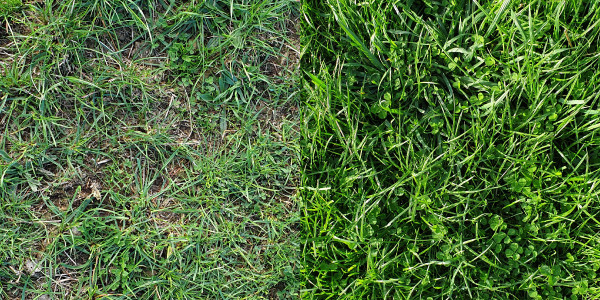Benefits of deferred grazing

Snapshots of a grazed (left) and deferred (right) section of a paddock on a beef and sheep farm northwest of Hamilton. Photos were taken in late autumn, three months after the deferred period ended.
Maintaining pasture quality over the whole farm:
By removing some paddocks from the grazing round, the stocking rate is increased over the rest of the farm. As a result, the spring feed surplus is better utilised and pasture quality is maintained.
Providing a feed wedge at the end of summer:
This avoids the cost and workload of buying and feeding out supplementary feed. A standing feed wedge available at the end of summer is particularly useful in drought years.
Increases pasture persistence:
Resting perennial ryegrass and other species from grazing from mid-spring until late summer / early autumn enables the desirable species to reseed and produce new plants in the following autumn. New tillers are also produced from the existing plants.
This leads to an increase in the tiller density of desirable pasture species and can increase pasture persistence.
An increase in clover populations after a long-deferred period:
Research from the 1950s in summer-moist hill country near Palmerston North showed that grazing pastures until late December to reduce ryegrass seed production, followed by resting pastures to allow white clover to flower and set seed, built up the clover seedbank and replenished energy reserves of existing clover plants. This led to an increase in the clover content in the pasture. Resting pastures from grazing from late December is much later than standard practice. If using deferred grazing to increase the clover content, note that the optimal timing of pasture rest will depend on the clover species.